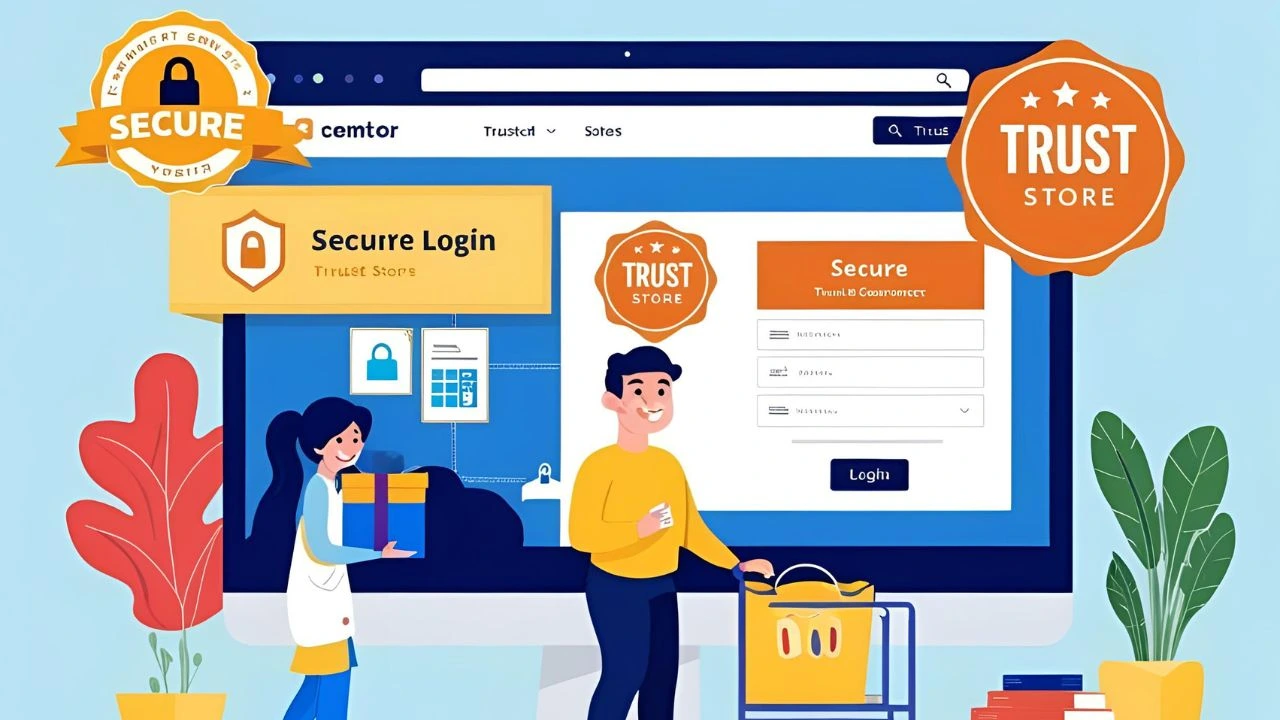In the world of e-commerce, trust is everything. No matter how great your products are, if users don’t feel safe or confident on your site, they won’t click “Buy Now.”
Building trust isn’t just about having a sleek design — it’s about authenticity, transparency, and credibility. Let’s explore practical strategies to improve user trust and turn visitors into loyal customers.
1. Use HTTPS and Secure Checkout
The padlock icon in the browser bar isn’t just for show — it’s a sign of a secure site. If your store isn’t using HTTPS, many users (and browsers) will instantly back away.
How to implement:
- Install an SSL certificate on your domain.
- Use reputable payment gateways (like Stripe, Razorpay, or PayPal).
- Ensure your checkout page is fully secure with encryption.
✅ Trust tip: Display security badges from SSL providers and payment gateways near the checkout button.
2. Add Real Customer Reviews and Testimonials
Social proof is powerful. When customers see others loving your products, they’re more likely to trust you.
Tips:
- Allow verified reviews on product pages.
- Include photo reviews or video testimonials for authenticity.
- Don’t delete negative reviews — respond politely to show transparency.
✅ Trust tip: Show an average star rating + total review count near your product name.
3. Showcase Trust Badges and Certifications
Visual trust cues instantly reassure users.
Include badges like:
- 100% Secure Checkout
- Money-Back Guarantee
- SSL Secured
- Verified by Visa/Mastercard
- Free Returns/Shipping
✅ Trust tip: Place them near the “Add to Cart” button or during checkout steps.
4. Have Clear and Honest Policies
Transparency in your return, refund, shipping, and privacy policies builds trust.
Best practices:
- Use simple, jargon-free language.
- Display links to policies in the footer and product pages.
- Set realistic expectations on delivery times and refund processes.
✅ Trust tip: Offer a no-questions-asked return policy to remove buying hesitation.
5. Show Real Contact Information
A faceless store feels shady. Let users know you’re reachable.
What to include:
- Email address and phone number
- Physical address (if applicable)
- Contact form or live chat option
- WhatsApp support integration (very effective in some regions)
✅ Trust tip: Add a dedicated “Contact Us” page with response hours and FAQs.
6. Add “About Us” with a Human Touch
People don’t buy from brands — they buy from people. Show the story behind your store.
What to include:
- Your mission or why you started the brand
- Photos of your team or workspace
- Behind-the-scenes content (bonus: add a video!)
✅ Trust tip: Include your values and how you ensure product quality or ethical sourcing.
7. Provide Guest Checkout Options
Forcing users to create an account before buying? That’s a trust-killer.
Solution:
Allow guest checkouts and only ask for the essential information needed to complete the purchase.
✅ Trust tip: Clearly state how user data will be used and never spam them post-purchase.
8. Display Real-Time Proof of Activity
Use tools that show:
- “X people are viewing this product”
- “John from Mumbai just bought this item”
- “Low stock alert!”
These real-time triggers create urgency and credibility.
✅ Tools: FOMO, Proof, Beeketing
9. Use High-Quality Product Images & Descriptions
Poor images = poor trust.
Do this:
- Use multiple angles and zoom-in options.
- Show product in real-life use.
- Write accurate, benefit-driven product descriptions.
✅ Trust tip: Include sizing charts, ingredients, or product specs to answer all questions upfront.
10. Ensure Fast Loading & Mobile Responsiveness
A slow or glitchy site is a red flag.
Optimize for:
- Speed (use tools like GTmetrix or PageSpeed Insights)
- Mobile usability (responsive layout, fast tap targets)
- Simple navigation and clear CTAs
✅ Trust tip: Add a loading animation or progress bar during the checkout process to reduce drop-offs.
Conclusion
Trust is earned — and in the online world, every click, design element, and word matters.
By securing your store, showing authenticity, and putting your customer first, you create a space where users feel safe and confident buying from you.


